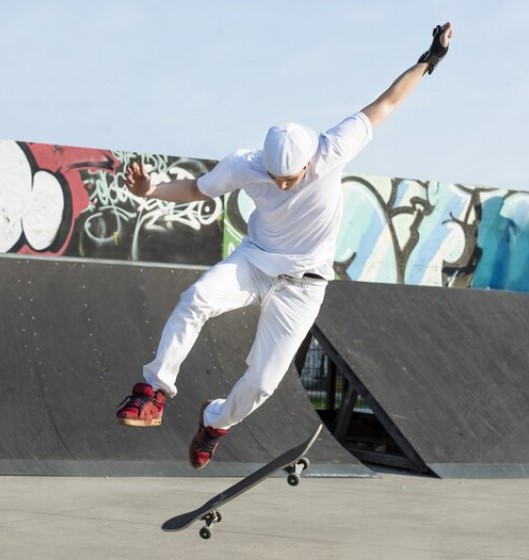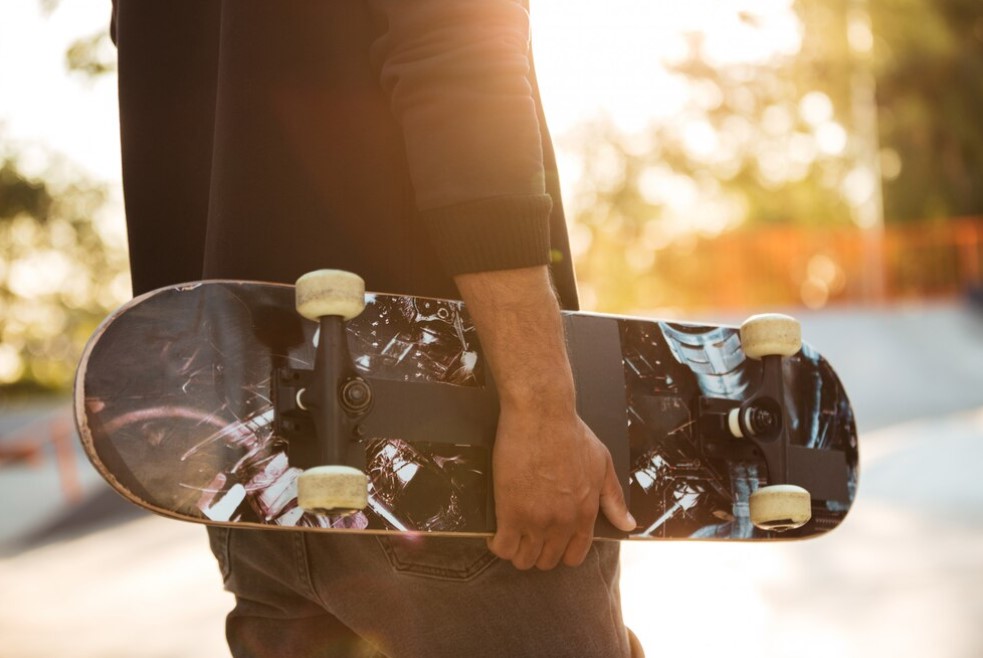
Competitive skateboarding requires a combination of skill, strength, agility, and endurance. To excel in this dynamic sport, skateboarders must follow structured training regimens that enhance their physical abilities and technical skills. This article explores the key components of training for competitive skateboarders, providing valuable insights into the various aspects that contribute to success on the board.
Strength and Conditioning
Skateboarding involves explosive movements, balance, and stability, making strength and conditioning training essential for competitive skateboarders. Incorporating exercises that target the lower body, core, and upper body helps build the necessary strength and stability required for executing tricks and manoeuvres.
Strength training exercises such as squats, lunges, deadlifts, and calf raises enhance lower body strength and power. Additionally, core exercises like planks, Russian twists, and bicycle crunches improve stability and balance, crucial for maintaining control on the skateboard. Upper body exercises such as push-ups, pull-ups, and shoulder presses enhance overall body strength, aiding in stability during tricks and transitions.
A well-rounded strength and conditioning program that focuses on lower body, core, and upper body exercises helps competitive skateboarders build the necessary strength and stability for optimal performance.
Skill Development and Technique
Mastering technical skills and developing proper technique is vital for competitive skateboarders. Regular practice and repetition are key to honing skills such as ollies, kickflips, grinds, and aerial tricks. Devoting time to skatepark sessions, street skating, and focused skill drills allows skateboarders to refine their technique and build muscle memory.
Skateboarding drills can include specific trick repetitions, balance exercises, and obstacle-based challenges. Breaking down each trick into its components and practising them individually helps skateboarders understand the mechanics and gradually progress towards executing the entire trick seamlessly.
Consistent practice, focused skill drills, and a commitment to mastering technique are crucial for competitive skateboarders to excel in their chosen tricks and manoeuvres.
Endurance and Cardiovascular Conditioning
Skateboarding requires stamina and endurance, especially during long sessions or competitions. Cardiovascular conditioning plays a significant role in supporting sustained performance on the board. Engaging in aerobic activities such as running, cycling, or swimming helps improve cardiovascular fitness, lung capacity, and overall endurance.
Interval training, which alternates between high-intensity bursts and recovery periods, is particularly beneficial for skateboarders. This type of training simulates the intermittent bursts of energy required during skateboarding sessions and enhances the body’s ability to recover quickly between tricks.
Incorporating cardiovascular conditioning exercises, such as aerobic activities and interval training, improves endurance and overall performance for competitive skateboarders.
Flexibility and Mobility
Flexibility and mobility are crucial for preventing injuries and executing complex movements on the skateboard. Stretching exercises and mobility drills help improve joint range of motion, muscle flexibility, and overall body mobility.
Dynamic stretching, which involves moving the body through a full range of motion, is recommended before skateboarding sessions to warm up the muscles and prepare them for the demands of the sport. Static stretching, on the other hand, is best performed after a session to improve flexibility and aid in muscle recovery.
Incorporating regular stretching exercises and mobility drills into a training regimen enhances flexibility, reduces the risk of injuries, and allows competitive skateboarders to execute tricks with greater ease.
Table. Sample Weekly Training Schedule for Competitive Skateboarders
| Day | Activity |
|---|---|
| Monday | Strength Training (Lower Body, Core) |
| Tuesday | Skill Development (Trick Practice, Drills) |
| Wednesday | Cardiovascular Conditioning (Interval Training) |
| Thursday | Rest or Light Active Recovery (Stretching, Mobility) |
| Friday | Strength Training (Upper Body, Core) |
| Saturday | Skill Development (Skatepark Session, Street Skating) |
| Sunday | Rest or Light Active Recovery (Stretching, Mobility) |
Competitive skateboarding demands a comprehensive and well-structured training regimen that encompasses strength and conditioning, skill development, endurance training, and flexibility exercises. By following a disciplined training program that focuses on these key areas, skateboarders can enhance their physical abilities, refine their technique, improve endurance, and minimise the risk of injuries. Embracing a holistic approach to training is essential for competitive skateboarders aiming to reach their full potential on the board.

